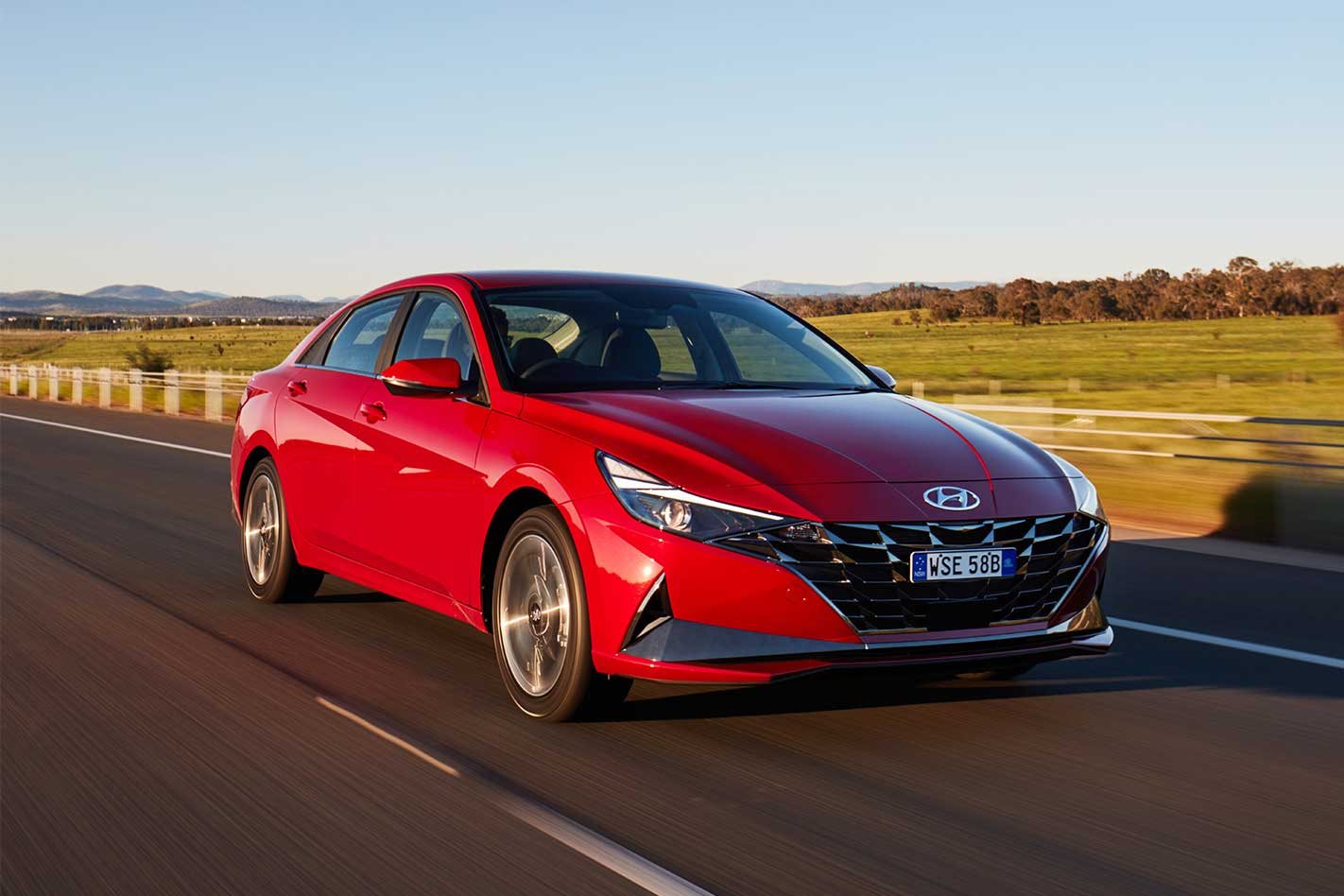
What is it?
The Hyundai i30 Sedan is a switch job. Made in right-hand drive specifically for Australia, it replaces the Elantra to become the brand’s new compact value-packed four-door sedan.
It also arrives on the new K3 platform before the i30 hatch and, therefore, holds answers about what sort of future the model has in a bustling competitor segment filled with cars like the Kia Cerato, Mazda 3 and Subaru Impreza.

Price and features (6/10)
Buyers might have a wider spread of brands from which to choose a compact hatch, but more four-door sedans are entering the market as buyers look for the same all-round package in a slicker wrapping.
Price-wise, the Hyundai i30 Sedan Active begins at $24,790 for the six-speed manual transmission variant. But a six-speed automatic transmission adds $2000 to that figure, for a total of $26,790.
That sits above every one of its rivals, like the Toyota Corolla Ascent priced at $25,395, the CVT-equipped Subaru Impreza sedan 2.0i at $25,990, the Kia Cerato DCT at $24,490 and the automatic Mazda 3 Sedan at $25,590.
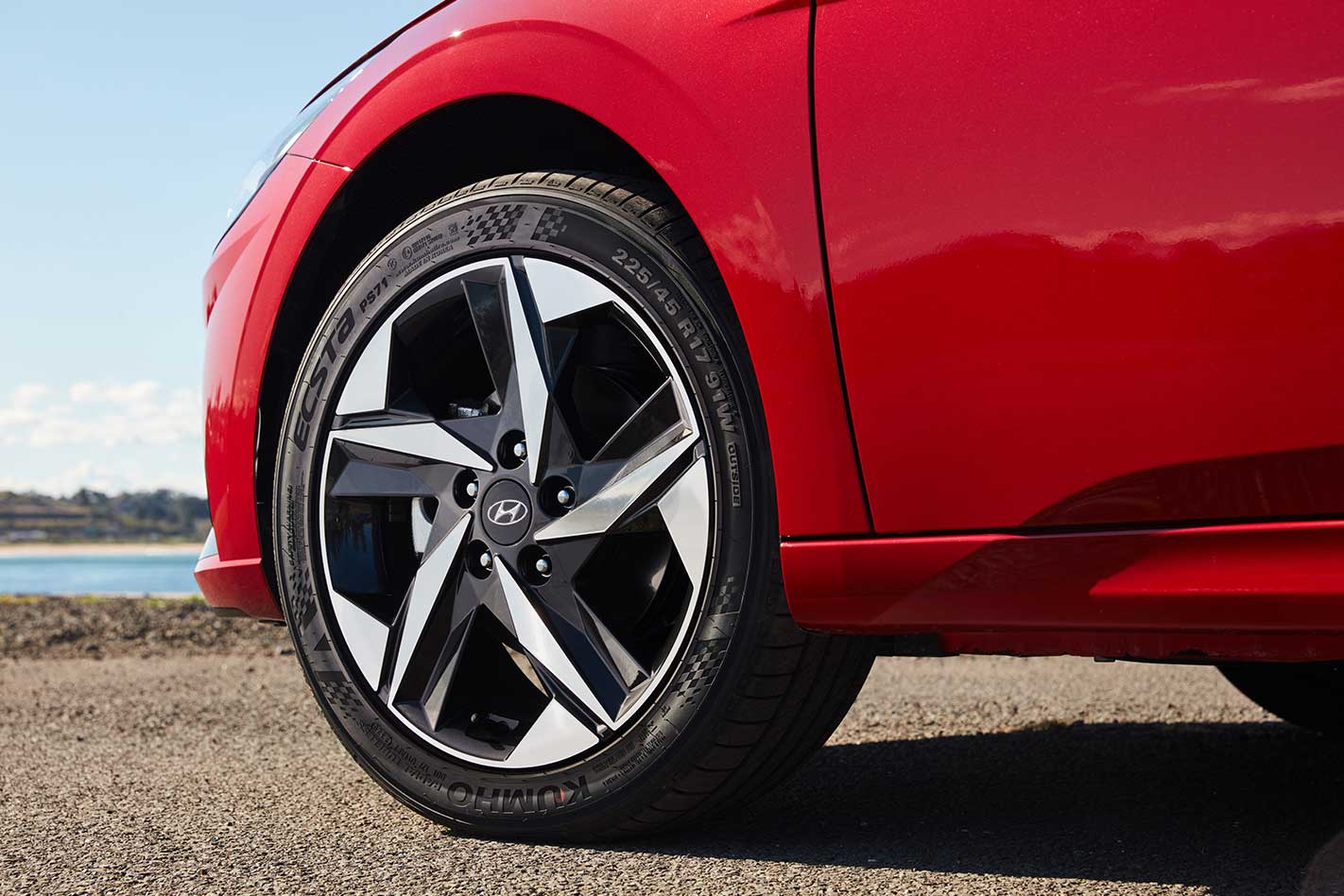
Compared to a hatch, you’ll score more boot storage in the i30 Sedan since it offers 474 litres compared to the hatch’s 395 litres, which is measured with the rear seats up.
Otherwise, the Hyundai i30 Sedan comes with a four-cylinder 2.0-litre petrol engine, 17-inch alloys, a full-size spare tyre, rear parking sensors and camera, LED headlights as well as a tyre pressure monitoring system.
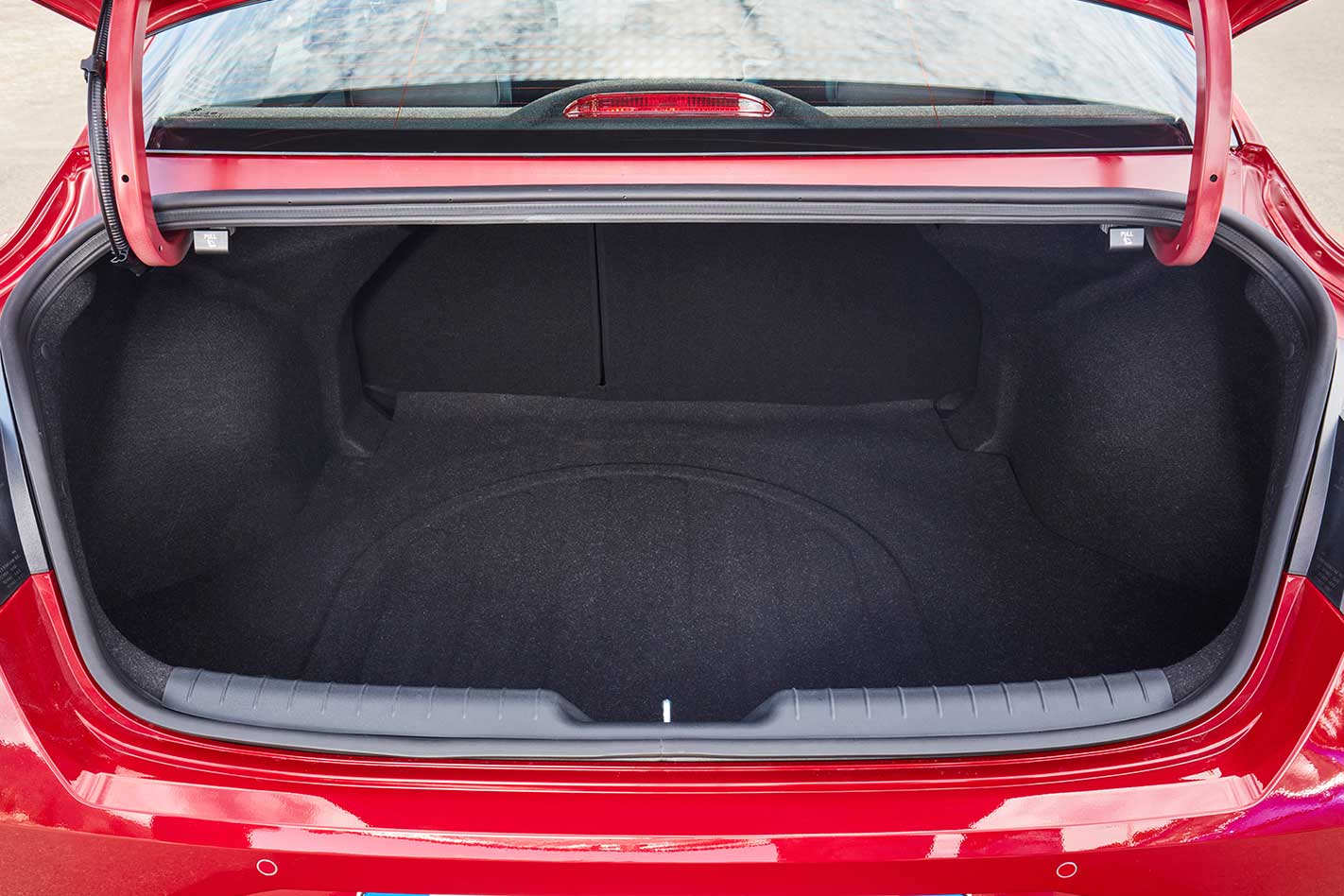
Ownership costs (7/10)
Hyundai offers an unlimited-kilometre five-year warranty on the i30 Sedan, with a service recommended every 12 months or 15,000km, whichever comes first.
A comprehensive fixed-price service program known as the Lifetime Service Plan provides fixed-price servicing on the life of the i30 Sedan, which can be transferred to a new owner.
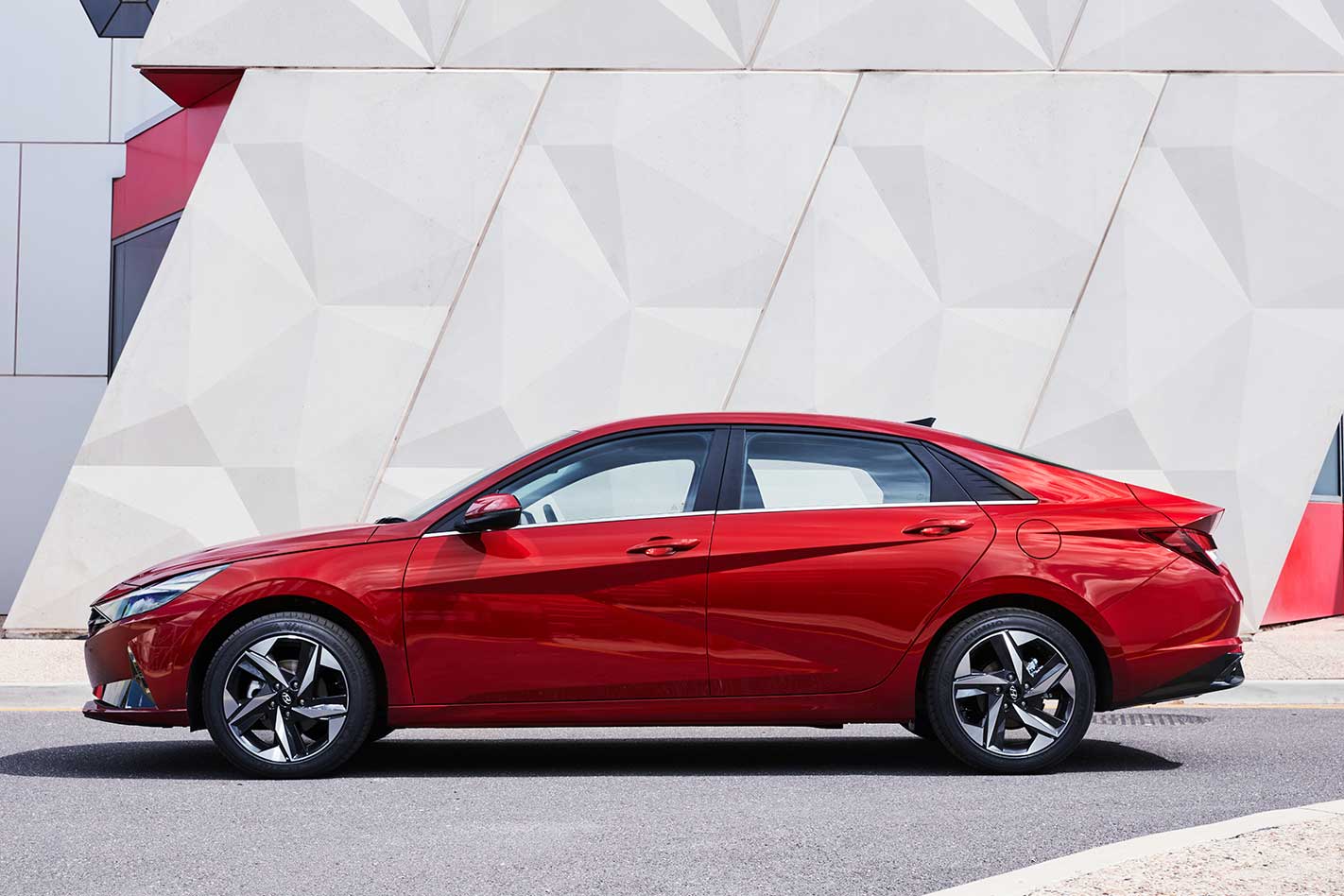
On top of this Hyundai offers free roadside assistance while you’re keeping to the factory servicing plan, extending it 12 months with every scheduled visit.
Meanwhile, at the fuel bowser, the i30 Sedan’s petrol engine drinks 91RON octane unleaded fuel at a minimum and is compatible with low concentration ethanol blends like E10.
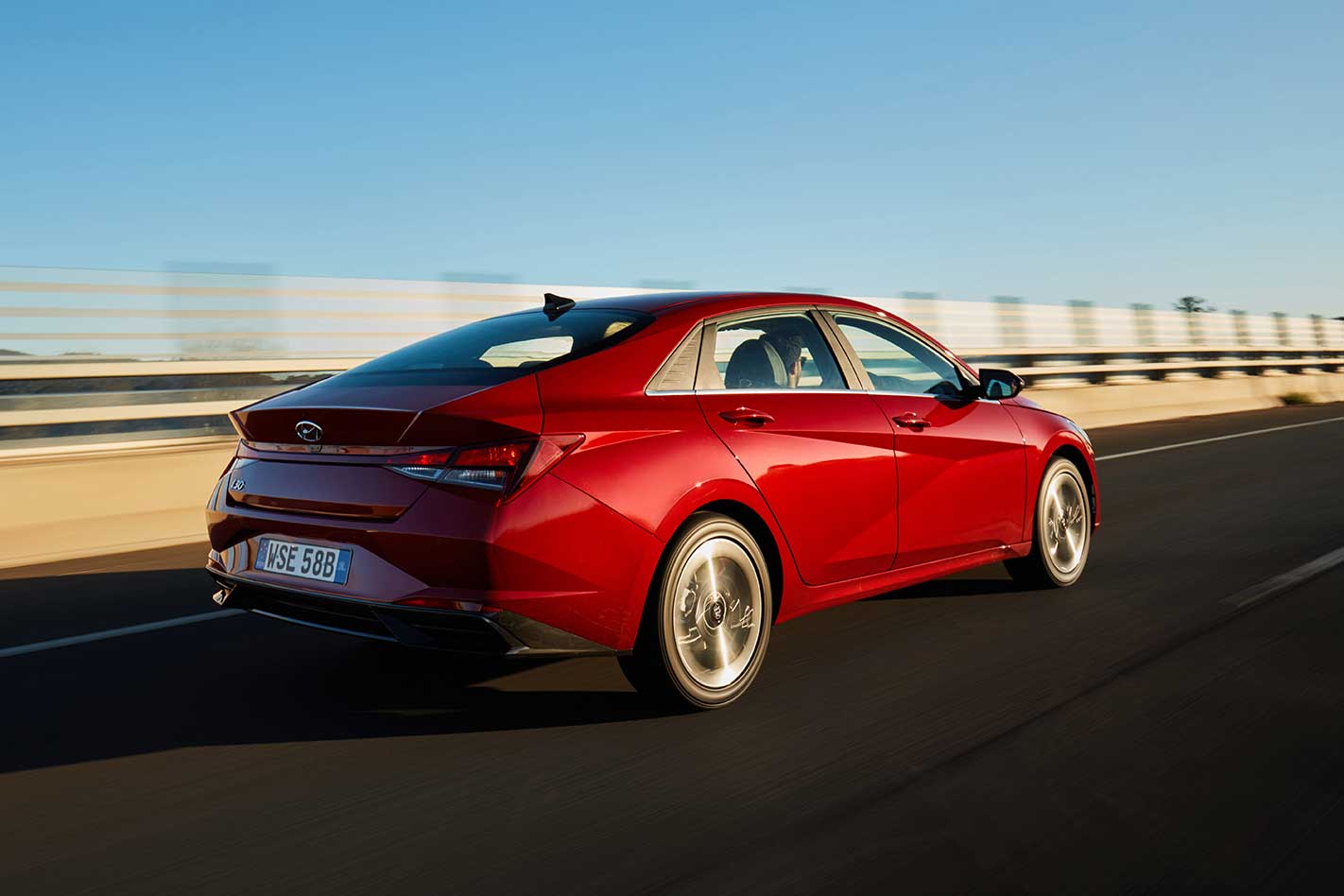
That equals a range of about 600km from a single 47-litre tank, which will cost about $60 to fill on unleaded fuel at $1.30 per litre.
Comfort and convenience (7/10)
Inside presents a completely redesigned cabin to the Elantra and current hatch with driver-centric packaging and striking styling.
Vents now blend into the sweeping metal accents, while the centre infotainment screen lives within the stack, rather than standing separate. The cluster, too, has been partitioned between analogue and digital functions, much like a Porsche 911 cluster.
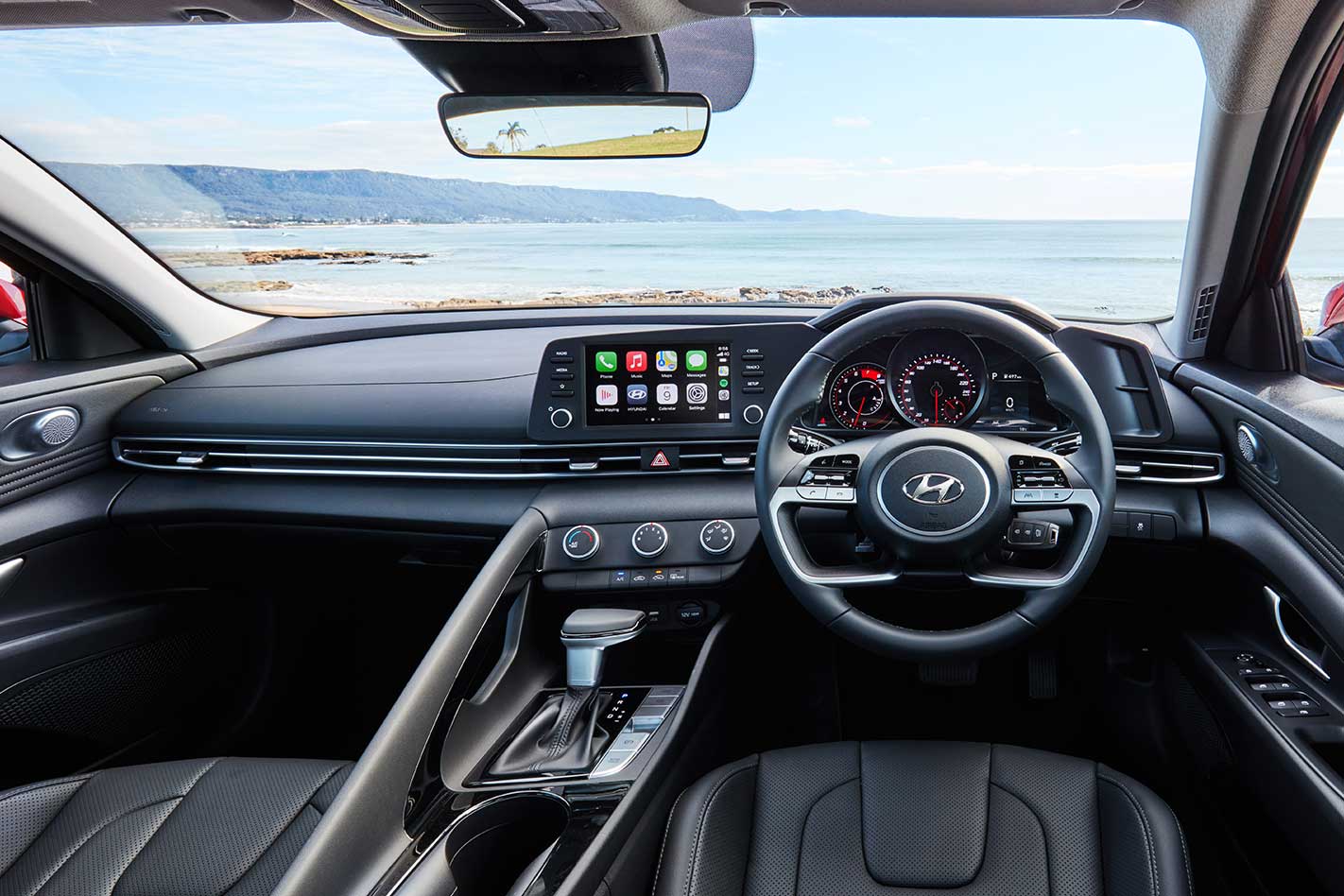
These Volkswagen Group-esque elements aren’t surprising given Hyundai’s design boss was Luc Donckerwolke, a Bentley and Lamborghini design guru until mid-2020. But given the car’s higher price, the cabin feels slightly underwhelming on perceived quality, with plastics on the centre stack and around the HVAC controls rising as the biggest culprits.
A lot is going on inside and it is almost over-styled to a fault. For instance, the central flying buttress obstructs the passenger’s right elbow from resting on the centre glove box.

There’s also a lot of kit as standard, with wireless charging and smartphone mirroring joined by heated side mirrors and keyless entry, though turning the engine over still requires inserting the key. The Active also supplies two USB ports in the front.
When driving you’ll check your speed most often on the cluster’s digital screen, and Apple Carplay or Android Auto remain vastly superior to the car’s infotainment software, which is largely unchanged on the standard 8.0-inch display.
Annoyingly, the wireless Carplay function cut out on us repeatedly, but it’s not a problem that’s unique to Hyundai, with the same bug affecting luxury brands with the technology.
Safety (8/10)
Hyundai’s loaded the i30 Sedan Active with a good spread of safety gear. It scores hill-start assist, driver attention monitoring, lane-keeping assist, forward collision warning and automatic emergency braking. Automatic variants also come with smart cruise control.
However, you won’t find a safety rating on the product sheet because the car hasn’t been crash-tested for Euro NCAP since it isn’t sold over there. Hyundai doesn’t intend to complete local crash testing, either.
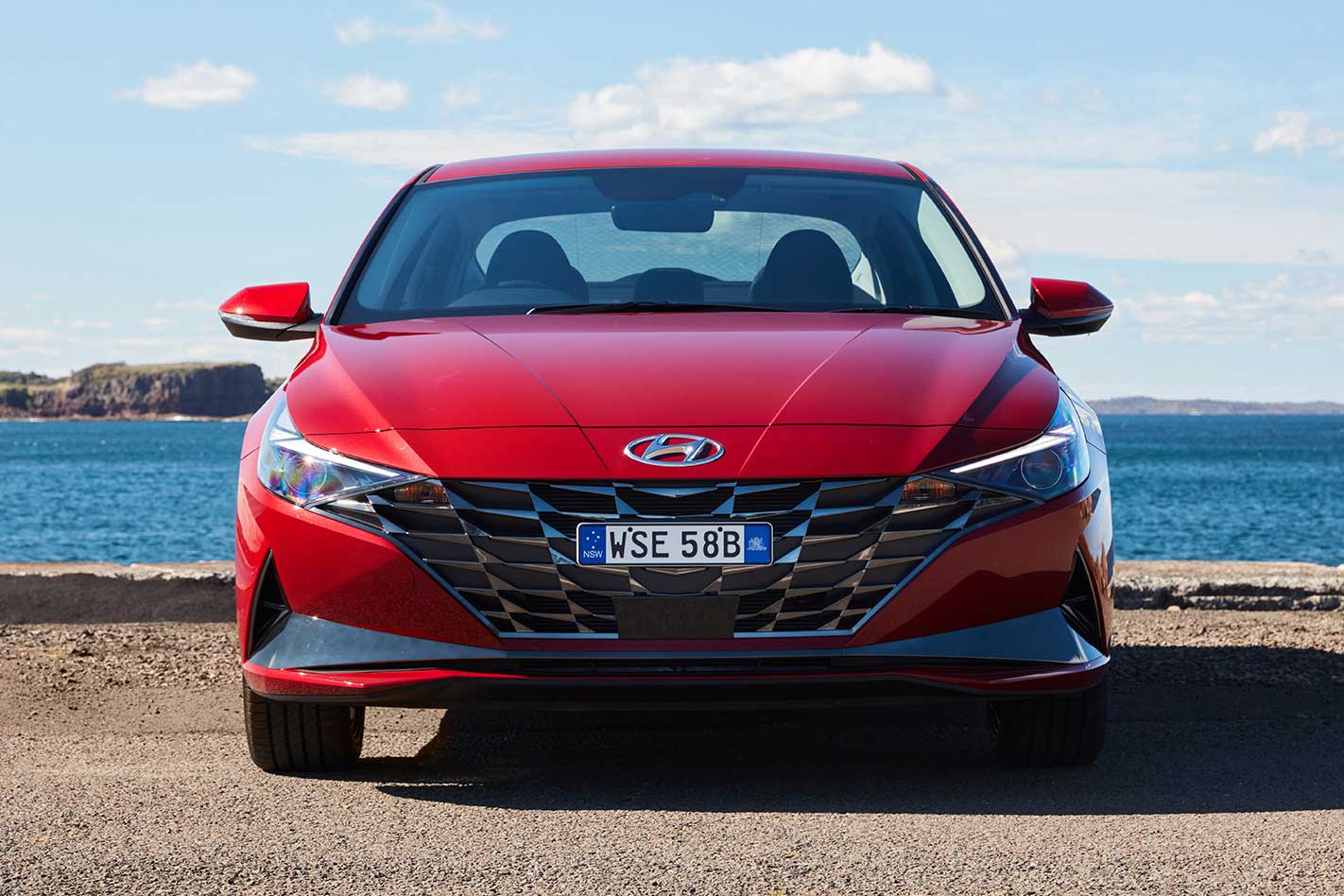
Lane-keep assist steers the car relatively straight without pin-balling between lines. Meanwhile, the smart cruise control applies the brakes gently when cars cut into its range.
Forward visibility is excellent, thanks to front pillars rotated to hide their thicker cross-section. The B-pillars also allow over-shoulder visibility.
Steering wheel buttons offer a great deal of accessibility to both controlling infotainment and safety functions, reducing the time your hands or eyes spend searching the cabin.
Power and performance (7/10)
The petrol 2.0-litre engine is a robust unit that likes to rev to its 6500rpm redline despite a heavily under square bore and stroke ratio. It’s also fairly linear, delivering its torque peak around 4500rpm before chugging on to a 6200rpm power peak.
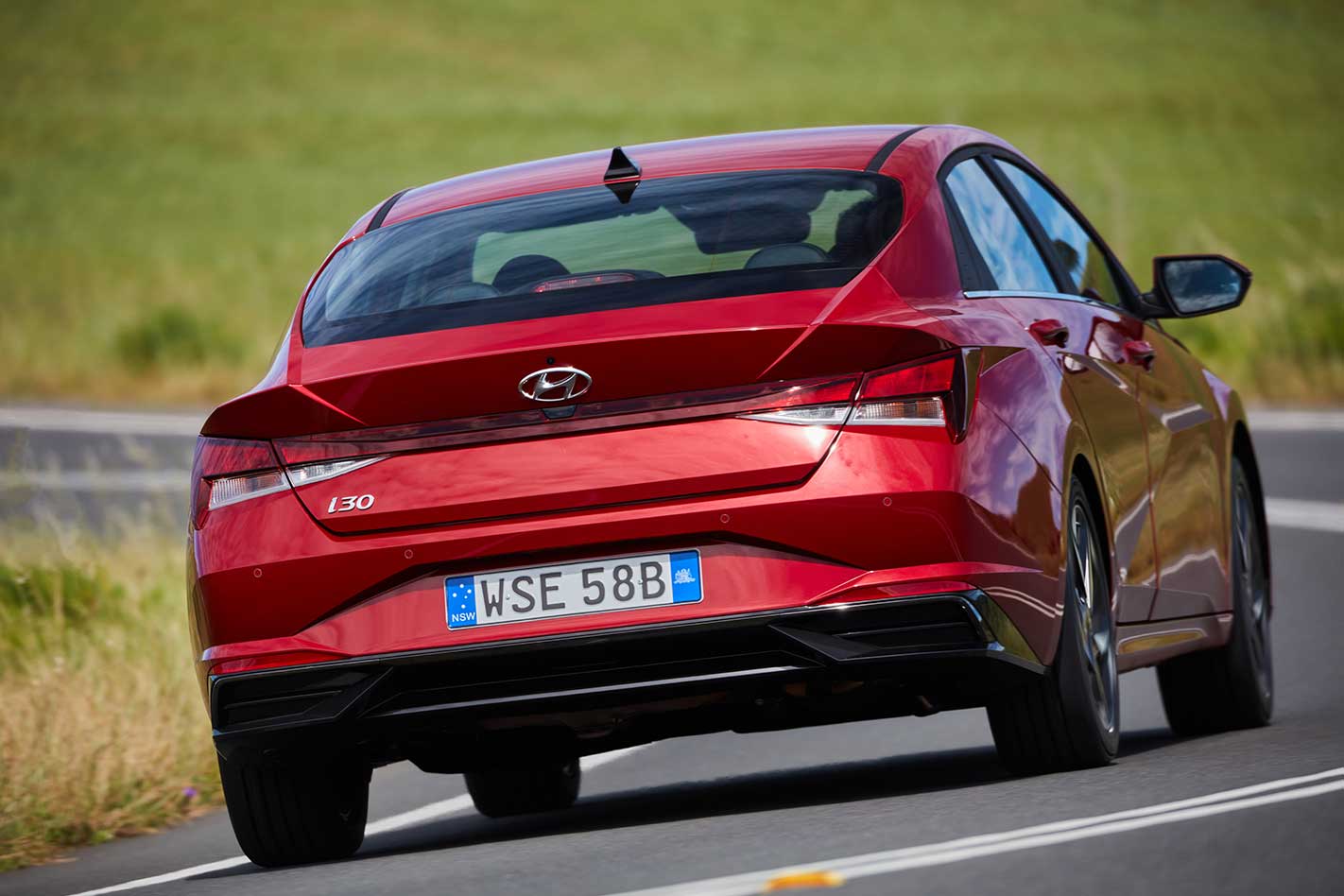
Of course, this is nothing unusual at this price point, where many rivals produce the same outputs, and there remains the more powerful, more expensive 150kW/265Nm i30 N-Line for keener drivers.
The six-speed transmission works fine for day-to-day roles, shifting cleanly and providing good throttle response at low speed. However, a manual would be more involving since the auto struggles to keep up at a brisk pace, feeling disinterested in rushed downshifts while in manual mode and staying a gear high when left to its own devices.
How does it drive? (9/10)
When you push the i30 Sedan Active on a winding road you will understand why it has a flying buttress mounted on the centre console. It’s for your front passenger to grab.
The i30 Sedan’s Australian specific suspension tune generates a surprising amount of grip from its humble Kuhmo Ecsta PS71 rubber. You can feel its low centre of gravity help hold the road with the sort of tenacity you’d expect from a warm hatch.
The car remains balanced through corners and while the front-end doesn’t respond immediately to the impressively direct steering, you can feel the car’s natural suspension balance help turn it into corners on a finely tuned brake pedal.
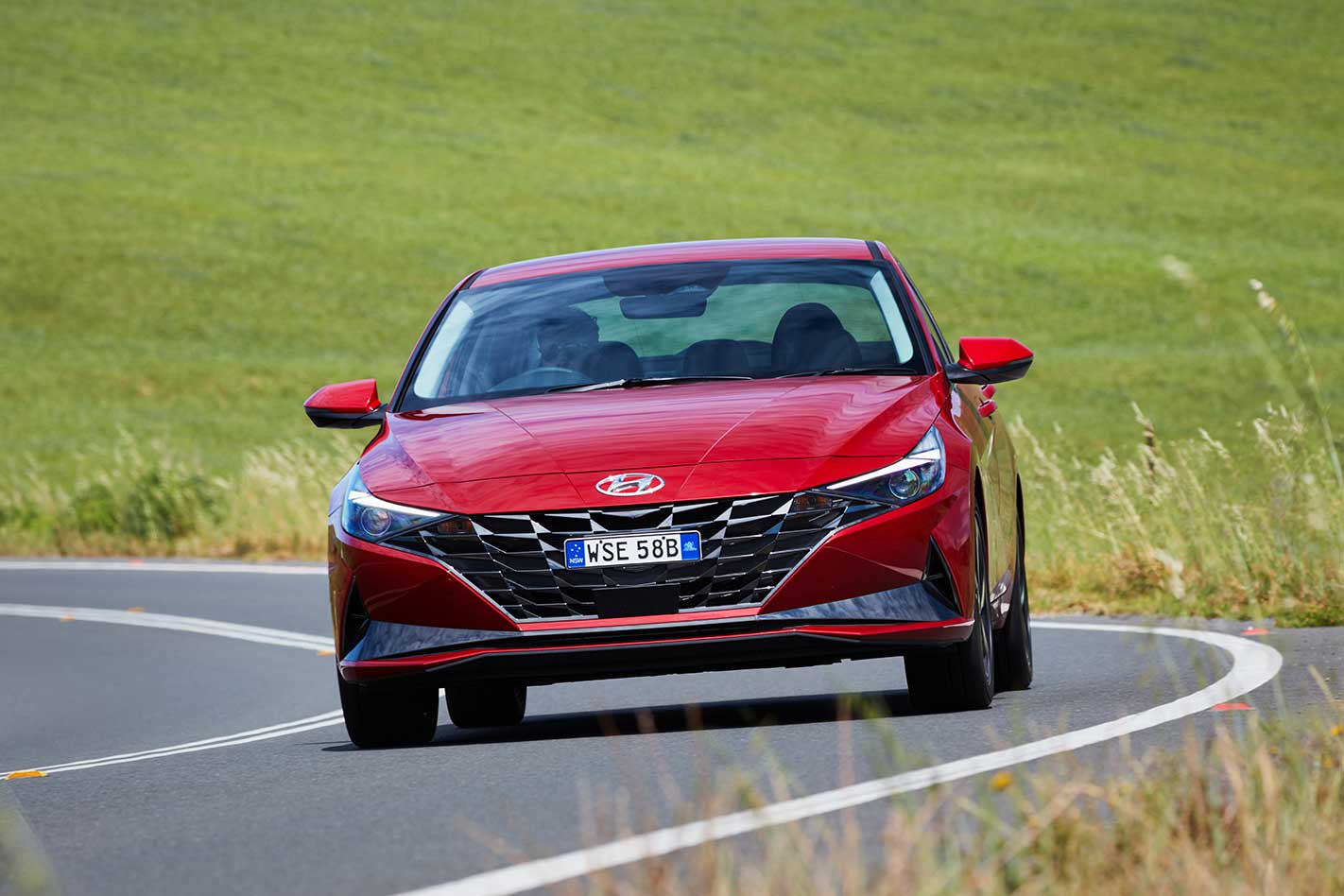
Its everyday ride is good, as well, with the reasonably chunky 45-profile tyres and torsion-beam rear axle suspension setup only transmitting some hard edges into the cabin. But this hardly spoils the car’s urban manners.
Verdict (7.5/10)
At $26,790 the i30 Sedan Active is expensive among its competitor set, its price matching the next level up in other rivals’ model ranges. Where it sets itself apart is with its sophisticated ride and handling mix that would leave brands, even some above its natural competitor set, asking why their cars don’t feature a bespoke suspension tune.
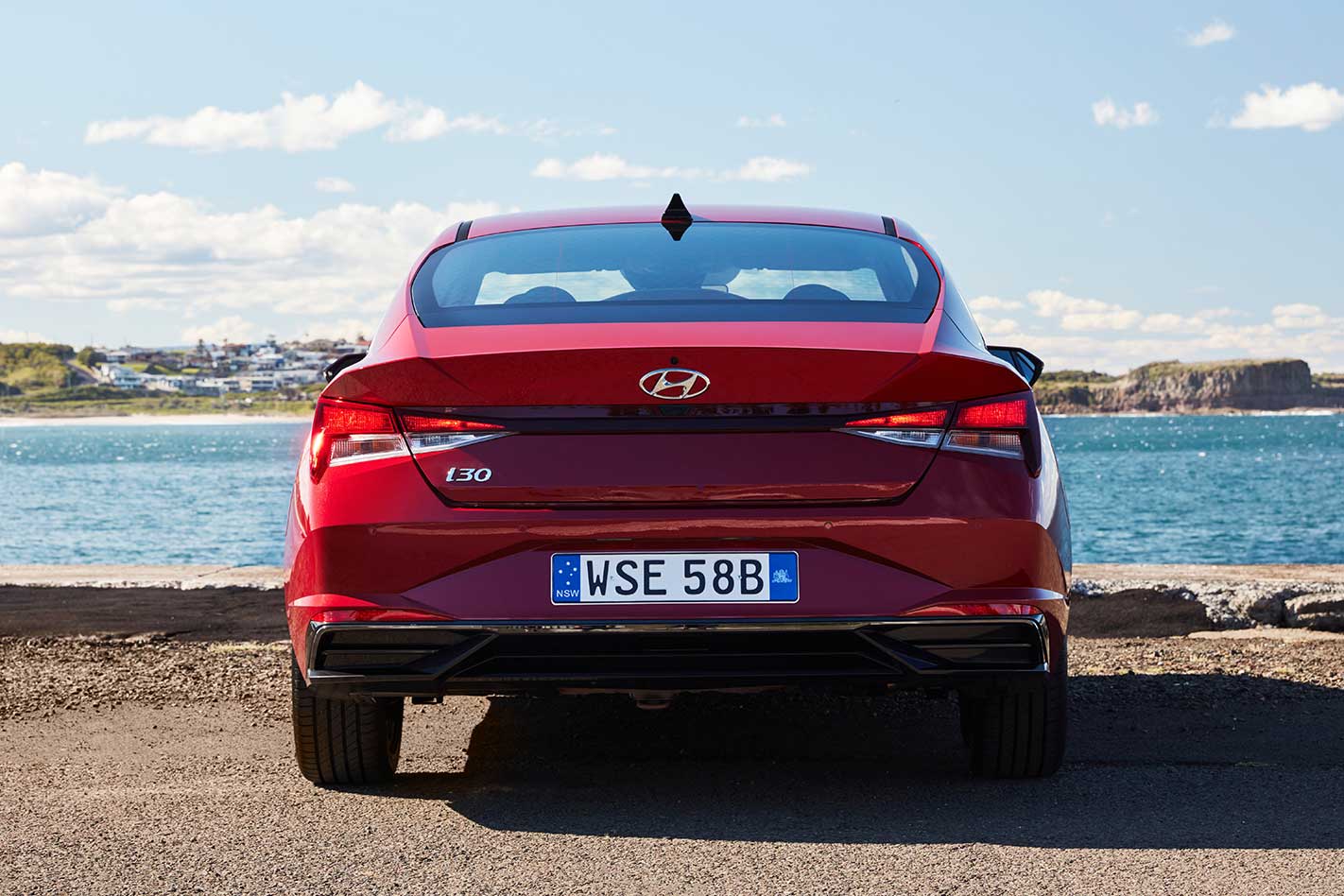
No one could call it boring, either, given its dramatic styling and futuristic design both inside and outside the car. However, while its package fails to deliver to that same sort of impact, the new i30 Sedan is a meaningful mark of progress on the Elantra that will be worth a look for some time.
Pros: Ride and handling, interior space, safety systems
Cons: Divisive impractical styling, price, needs more grunt
Specs
Body: 4-door, 5-seat sedan
Drive: front-wheel
Engine: 1999cc inline-4cyl, DOHC, 16v
Power: 117kW @ 6200rpm
Torque: 191Nm @ 4500rpm
Fuel economy: 7.0L/100km (claimed)
Transmission: 6-speed automatic
Weight: 1230kg
Price: $26,790 (before on-roads)




